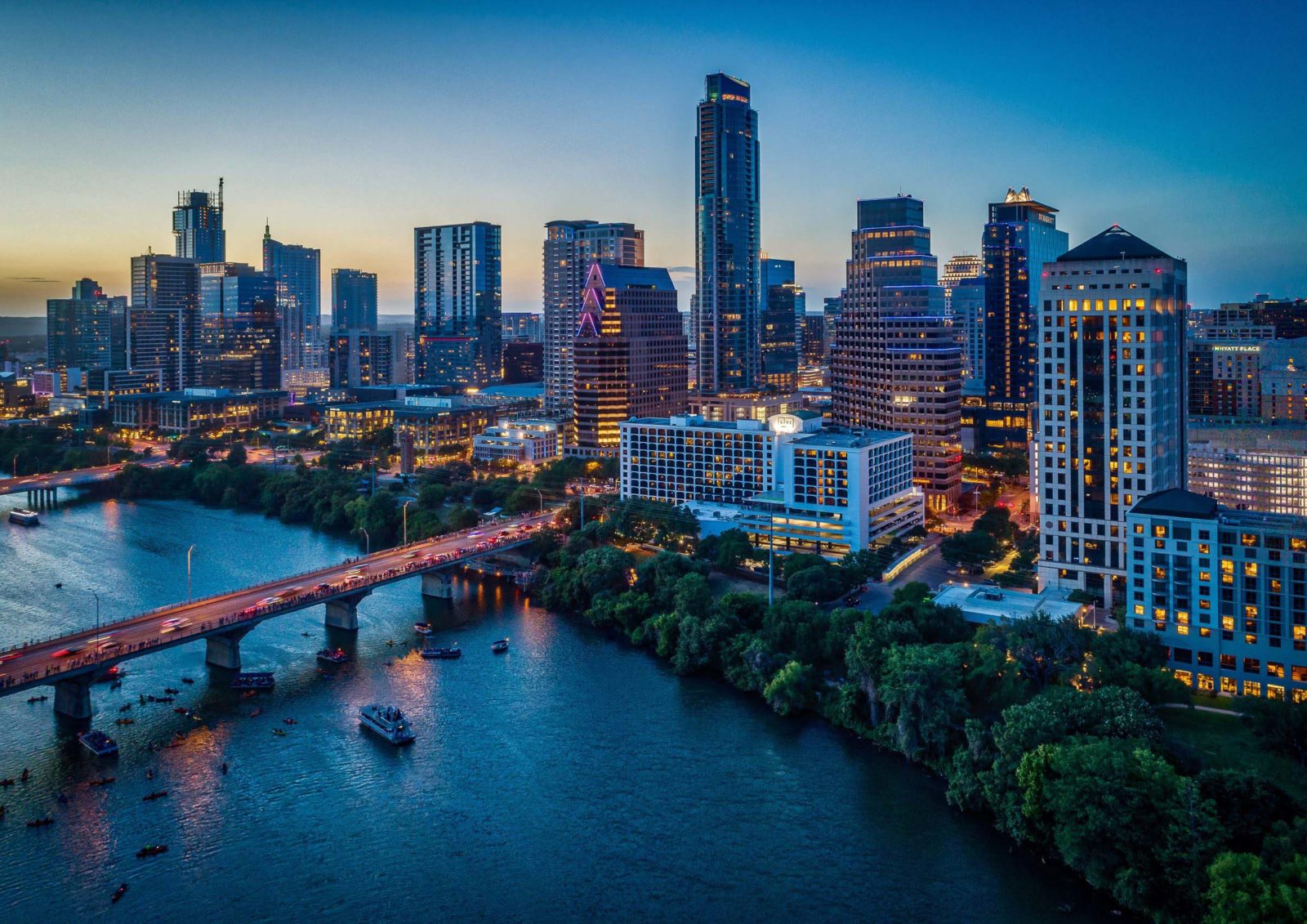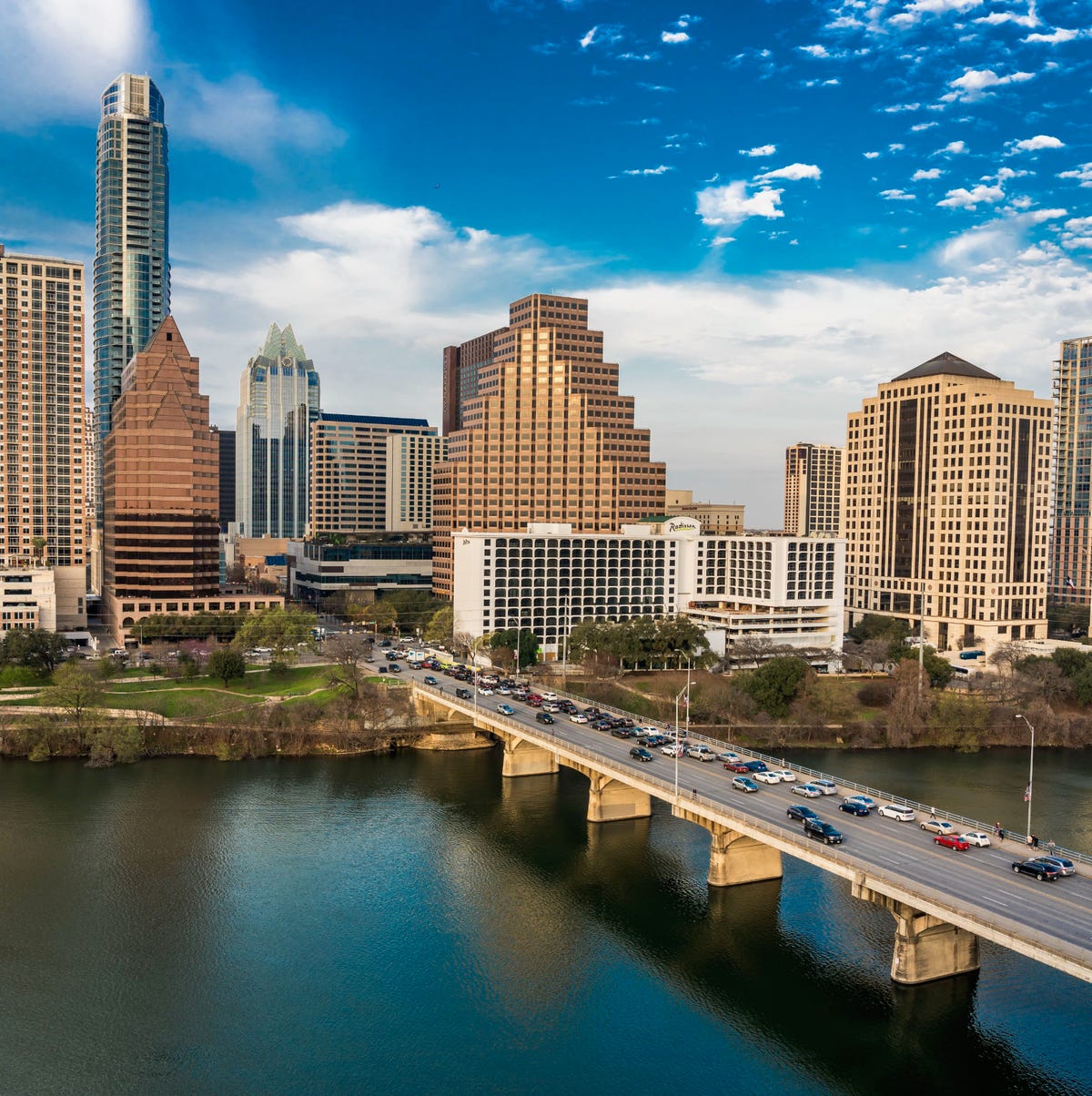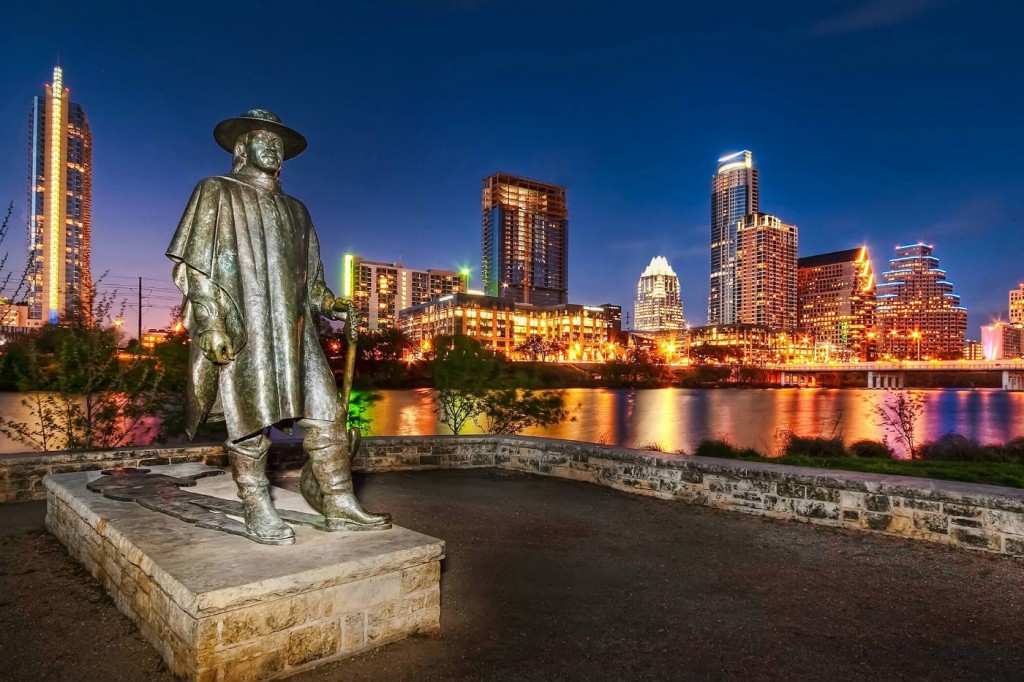Uncovering the Phenomenon of Austin, Texas Growth

Sep 04, 2023
In recent years, Austin, Texas has experienced a tremendous growth in population due to its booming economy and influx of new residents. This trend is making the city an attractive destination for businesses, innovators, and those seeking diversity, and it now stands as one of the largest cities in Texas compared to other major cities within the state. While this expansion presents many opportunities for both current and future inhabitants alike. There are still various challenges that need addressing if Austin is going to be successful in long-term prosperity.
Short Summary
- Austin has experienced a 5.3% population growth due to job opportunities, affordable housing, and the city’s appeal.
- Central Texas is also experiencing rapid population growth, with Georgetown leading at 14.4%.
- Austin is projected to be the third largest U.S. city by 2030 and must address infrastructure strain, affordability issues, and increased demand for services in response to its expanding population size.
Austin’s Rapid Population Growth

The population in Austin has witnessed an astounding 5.3% increase from 2020 to 2022, making its growth highly remarkable. This upsurge can be credited to job prospects, reasonable housing costs, and the overall charm of the city’s metropolitan area. Despite such considerable progress, there are still struggles concerning infrastructure burden and affordability issues that have yet to be addressed adequately by the municipality of Austin. Nevertheless, with more economic development underway along with expanding business opportunities plus initiatives aiming for a revampment of downtown regions across this metro location – optimism is evident for what lies ahead when it comes down to sustaining high population expansion rates within Central Texas’ capital district.
Central Texas Boom

The population of Central Texas, particularly in Austin, has been increasing at a rapid pace. This can be seen from the growth rate reported by the Census Bureau for Georgetown, located within Travis County. Which saw an expansion of 10,887 people and thus rose to 86,507 residents, equating to 14.4%.
This shows that this booming city is drawing much attention as both new citizens and companies are moving into the area with great enthusiasm. The region around it is exceptionally attractive, as proved by its fast-growing populace, which continues even today!
Fastest Growing City Status
Austin has witnessed tremendous population growth and recently topped the list of being among America’s ten biggest cities, surpassing San Francisco. This surge is not exclusive to Austin, but also many other parts of the US like Georgetown in Texas, which saw a 14.4% increase in population or Santa Cruz California going up by 12.5%, while San Diego experienced 7.3%.
All these figures place Austin among the most rapidly developing urban centers across the country, making it an ideal city for both living and working purposes.
The Influx of New Residents

Austin’s population has experienced a major spike over the past decade and is currently first among the largest 50 metropolitan areas in terms of the number of new residents as a proportion of the total population. Over 2020-2022, especially, domestic migration into Austin accounts for 59.7% of its overall growth—significantly more than cities such as San Jose. This influx has had significant impacts on various aspects within the city boundary, including housing availability and job opportunities, due to an increase in young people joining this metropolis’ populace.
Housing Market Expansion
Recent years have seen a considerable expansion of Austin’s housing market, thanks to the rapid growth in population. The median sales price has dropped by 17.5% compared to last year, while inventory levels are now higher than before the pandemic. Giving potential buyers an advantage due to decreased competition for properties. Population increase and economic development will likely fuel Progress in this sector, but many residents worry about affordability issues that arise with such fast-paced expansion, which also puts strain on infrastructure within the city limits.
Job Opportunities
Austin is a highly attractive city for potential newcomers due to its abundant job opportunities. A broad range of positions are available in industries such as technology, sales, and customer service. Allowing those searching on websites like Indeed, ZipRecruiter, and SimplyHired plenty of options when it comes to finding the perfect fit.
The bustling Austin area easily rivals New York City’s robust labour market by providing prospective residents with numerous employment alternatives making it an enticing destination for all kinds of workers alike.
Best Neighborhoods in Central Austin
BALCONES PARK | WEST CAMPUS | BRYKER WOODS | ALLANDALE | CAT MOUNTAIN | BOULDIN CREEK | BRENTWOOD | ZILKER | NORTHWEST HILLS | CLARKSVILLE | HIGHLAND HILLS | HYDE PARK | CRESTVIEW | NORTH SHOAL CREEK | MOUNT BONNELL | OLD ENFIELD | WOOTEN | TRAVIS HEIGHTS | HIGHLAND PARK | DEEP EDDY | BARTON HILLS | ROSEDALE | PEMBERTON HEIGHTS | SHOALMONT | TARRYTOWN | UT AREA
Comparing Austin to Other Texan Cities

To gain a better understanding of the growth Austin is experiencing, we can compare it to other major cities in Texas such as San Antonio and Fort Worth. By considering population size, quality of life, cost of living, and more, one will have access to all sorts of unique characteristics each city has to offer.
Austin stands out from its fellow Texan towns with remarkable success in many areas. Indeed, this vibrant metropolis boasts an extraordinary booming economy that continues unabatedly. The obvious evidence lies within the increasing number of people inhabiting the area- making up for about two million residents currently – which leads us to our next point: How does this dynamic influence costs? Astonishingly enough, even though being surrounded by so much vitality, prices remain quite affordable compared to at least among these three eminent municipalities.
Austin vs. San Antonio
In the past few years, Texas has seen noticeable population increases in its major cities such as San Antonio and Austin. Specifically, data shows that San Antonio had the third-largest numerical growth rate out of all those examined. This led to greater job opportunities across a variety of industries including technology, finance, and healthcare for residents within these metropolitan areas.
The spike in new arrivals to both cities created an expansionary housing market due to increased demand from incoming dwellers. Yet with this rising growth came worries about whether their infrastructure could keep up with rapid population spikes over time.
Austin vs. Fort Worth
Fort Worth has witnessed a remarkable population growth in recent years, leading to its total population of 956,709 at the end of 2021. Consequently, it is now considered one of the fastest-growing cities in Texas and even holds a national rank. This dynamic development can also be observed when comparing Fort Worth to Austin, as it showed the highest rate of population expansion in 2022. To Highlight this trend for growth seen across the region, Little Elm City was found to have achieved tremendous progress with regard to increasing overall size during that period.
Challenges Associated with Austin’s Growth

Austin’s population growth has created many obstacles that the city must tackle. Most prominent of these are infrastructure issues, affordability problems, and the growing need for housing and public services. The municipality is working hard to discover remedies for this rapid expansion in population size – such as creating more accessible affordable homes – so they can ensure a pleasant living experience both now and into the future. With an ever-growing metropolis at its feet, Austin will have to continue making thoughtful decisions about how best to accommodate their citizens’ needs while still advancing with progress alongside its rapidly swelling populace.
Infrastructure Strain
The population boom in Austin has caused the need for housing to grow exponentially, consequently reducing affordability. This surge of people is also causing a strain on public services and transportation networks. The development that comes with such an upsurge puts extra pressure on Barton Springs water quality from runoff too. There are concerns about its reliability due to this rising human presence as well since the dependence on its water supply could diminish further.
Affordability Concerns
In recent years, Austin has seen a rapid rise in its population, which has created an affordability issue. This is due to the gap between income growth and housing costs becoming increasingly wider as rent prices and property values go up. These developments have placed additional pressure on city residents with regard to obtaining suitable lodging that does not break their budget. As there are insufficient dwellings available for this growing populace, rising living expenses become unavoidable – Demonstrating the need for viable solutions addressing these matters of great importance to many people from different walks of life within the city’s boundaries.
The Future of Austin’s Growth

Austin is set to be one of the most populous cities in America by 2030. The city’s economy and population are expected to continue their growth, with a GDP increase each year at an average rate of 4.5%. This projected development makes Austin more inviting for job opportunities as well as numerous residents seeking new home prospects. Looking ahead into its future, it’s evident that this thriving metropolis will only expand over time.
Projected Population Growth
Predicted to add 750,000 citizens by 2040 based on population projections, the City of Austin will need to be prepared for what a larger populace brings. Necessary steps must be taken in order to meet this growing demand and guarantee that all residents are adequately catered for as it continues its development process. Estimates demonstrate an upsurge in inhabitants meaning new opportunities and challenges face Austin over the coming years, but with preparation comes success.
Economic Development
The economic expansion in Austin is a positive sign, as evidenced by the flourishing of the tech, healthcare, and hospitality sectors. The growth this city has experienced means its taxes can help finance public works projects and services. According to forecasts, Austin will experience an average annual rate of increase of 5%, which indicates it is on track for continued success going forward. This suggests that there’s no reason why this metropolis shouldn’t stay vibrant and prosperous well into the future.
Summary
Austin is one of the fastest-growing cities in America due to its rapid population growth, influx of new residents, and booming economy. Though this expansion brings issues such as infrastructure strain and affordability concerns, Austin is making strides toward tackling them so it can stay on track for prosperity. With all that’s going on there, it remains an exciting place to live work, and grow with prospects still ahead.
Frequently Asked Questions
Is Austin Texas still growing?
Austin is an example of one of America’s most rapidly expanding cities. The estimated population for Austin in 2022 will be around 975,000 people and it has seen a significant increase over the last ten years which now sees it stand as the 10th largest city across the entire country. Its population growth does not show any signs of slowing down as its fast expansion shows no sign of abating anytime soon.
Why is Austin Texas growing so fast?
Austin has seen a boom in population growth due to its attractive economic climate that encourages large companies like Apple, Samsung, and Tesla. This labor flexibility combined with the local economy is what makes Austin an ideal destination for investment and leads to increased levels of population growth within the city.
Which Texas city is growing the fastest?
Georgetown, Texas is the fastest-growing city of its size in all cities and towns with a population of more than 50,000 inhabitants. Its rate of expansion exceeds that seen in other locations across the U.S., making it one of America’s most rapidly expanding municipalities.
How does Austin compare to other major Texan cities in terms of population growth?
Austin is a prime example of population growth among the major Texan cities, having gained more new residents than San Antonio and Fort Worth in the last year. This increase can be attributed to many aspects such as its strong economy, diverse culture, and competitive cost of living. To other cities nationwide, Austin stands out for boasting one of the fastest growths with an impressive 10% rise in population during this period alone.
What challenges are associated with Austin’s rapid growth?
The expansion of Austin has proven to be a challenge for the city due to infrastructure limits and affordability problems, thus necessitating innovative solutions in order to maintain its development. To this end, there have been various measures taken by the municipality aimed at decreasing housing costs and boosting public transport. Growth must not cease if Austin is going to continue prospering. Making sure that citizens can find affordable homes remains an essential priority of the local authorities.
- Categories
- City Guides |
- Relocation Guides



